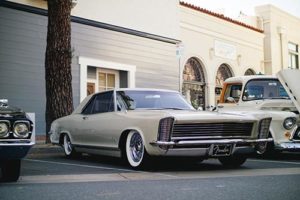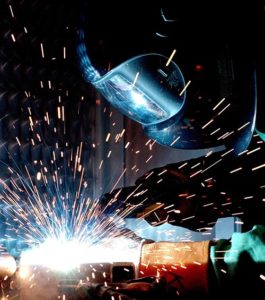Let’s settle this debate once and for all. Are new cars safer than old cars? Now, hear me out. On the top of my head, newer is always better. However, there are a lot of people claim that older cars are safer for the following reasons:
- Older cars were bigger
- Older cars were fully made out of metal.
- Older cars were made of stronger metal.
Let’s discuss each one.
Are New Cars Safer than Old Cars?
1. Older Cars Were Bigger
 There’s some truth to this claim. Older cars were indeed bigger. This was mostly because during the early ’80s and 90’s, the world didn’t have any problems with over congestion of cities. Plus, bigger cars were created for a specific demographic. Nowadays, a good number of cars (of the same name) are smaller in size and even newer cars come in half the size of their predecessors.
There’s some truth to this claim. Older cars were indeed bigger. This was mostly because during the early ’80s and 90’s, the world didn’t have any problems with over congestion of cities. Plus, bigger cars were created for a specific demographic. Nowadays, a good number of cars (of the same name) are smaller in size and even newer cars come in half the size of their predecessors.
But is bigger always better? Not usually the case. A bigger car means a bigger target. Also, being bigger means you take up a lot of room on the road. It’s easy to hit a pole or another car because you didn’t “expect” you’d hit them. The car’s size has absolutely nothing to do with its safety. Size only affects how many you can get in the car and how big of a space you take on the road.
Older Cars Were Fully Made Out of Metal
 True, a lot of older cars have a lower metal to plastic ratio. A lot of older car owners think the rising use of plastic (and “softer” metals) in their cars mean they are not as safe as their full metal cars. If anything, older cars were much heavier.
True, a lot of older cars have a lower metal to plastic ratio. A lot of older car owners think the rising use of plastic (and “softer” metals) in their cars mean they are not as safe as their full metal cars. If anything, older cars were much heavier.
Basically, what you have is a metal cage. Also, worth noting is that our understanding of metals back then is not as good as what we know now. We have a better understanding of how metals act under pressure, how they bend, why they bend, and how to make them better. With this understanding, engineers have found ways to reduce the amount of metal needed to make a car (to make them lighter, faster, and easier to control) while still ensuring the passengers are safe.
Older Cars Were Made of Stronger Metal
 Not true. While older cars were made of thicker metals, this does not mean they were stronger. Please understand that a time difference of 20 years can mean a lot of advancements in metallurgy. Metals used in cars in the 1990s was great back in the 1990s, but it’s nothing to what we have now.
Not true. While older cars were made of thicker metals, this does not mean they were stronger. Please understand that a time difference of 20 years can mean a lot of advancements in metallurgy. Metals used in cars in the 1990s was great back in the 1990s, but it’s nothing to what we have now.
While the majority of the cars we have now have a thinner metal housing, we have a much better understanding of metallurgy, allowing us to come up with better alloys. Better alloys mean better strength and durability.
Why Are Newer Cars Safer, Then?
 So, are new cars safer than old cars?
So, are new cars safer than old cars?
Yes! Newer cars are a lot safer than older cars because we already learned a lot about metals, cars, and what happens in accidents. Engineers and car manufacturers have studied various accidents and mishaps to come up with a solution to what puts a person in danger during a collision. By tweaking and upgrading the design over the years, car manufacturers have created cars that put the passengers at their safest during an accident.
Not to mention the myriad of safety standards we have developed over the years. Newer cars have airbags, roll bars, and better metal cages. All these developments were created to ensure the safety of all passengers. There are countless stories you can read on the Internet about people saved by an airbag or the car’s traction control. You are less likely to die or suffer a debilitating injury with a modern car than with an older car. That’s a fact.
Old Or New, Get Your Car Checked at T3 Atlanta
Whether your car is old or new, it’s always important to have your car checked to ensure all safety features are in tip-top shape. The helpful mechanics at T3 Atlanta can help you by doing a systematic maintenance check of all the safety features in your car to ensure they perform when you need them. Whether you need routine maintenance, a regular checkup, or in-depth work on your vehicle, T3 Atlanta can help. Give us a call today!










Leave a Reply
You must be logged in to post a comment.